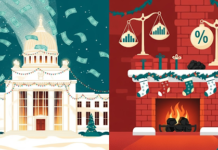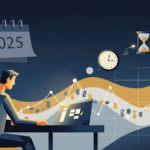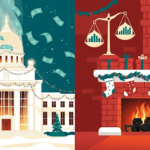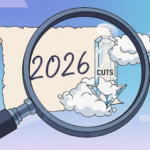Inflation vs. Tariffs: Who’s Really Moving the Market?
Markets are entering the new week facing a familiar double-whammy: inflation numbers on one side and political unpredictability on the other. While Wall Street has long been glued to CPI prints and Fed policy cues, this time, trade deals and tariff tweaks under the Trump administration are stealing the spotlight. With the Fed clearly in “wait and see” mode, as Powell couldn’t have stressed more, the noise is coming not from Jackson Hole, but from Beijing and Westminster.
This week, we’re breaking down why sector picking might matter more than macro guessing, and how the market narrative is shifting under the radar. As tariffs morph from economic bludgeon to strategic bargaining chip, the name of the game is precision, not panic.
This Week I Learned…
Tariffs Are the New Rates
This week, I learned that tariffs behave like a new monetary policy, and investors react accordingly.
Traditional economic levers like interest rates and bond yields used to dominate investor attention. But now, trade policy, particularly tariffs, dictates sector flows, earnings expectations, and investor sentiment. The most revealing part? Even as CPI data looms, the evolving tone of tariff negotiations is swinging markets more aggressively.
Trump’s latest moves, dialing back 145% tariffs on Chinese imports while floating deals with the U.K., are recalibrating sector expectations. Manufacturing, chips, rare earths, energy, and food production are emerging as frontline investment themes, not just macro categories. Why? Because these are the sectors being targeted for “economic security” and reshoring.
The key takeaway? Even without a Fed pivot, sector strategy is everything. Inflation volatility may continue, but markets are learning to live with elevated prices unless CPI posts a shocking deviation, and trade uncertainty is the bigger threat.
This week, don’t just watch the data. Watch the direction of policy tone and which industries it favors. That’s where the edge is.
The Fun Corner
Powell Said ‘Wait and See’. So We Waited…
Why did the investor bring a magnifying glass to the CPI report?
Because he heard core inflation was hard to see!
Okay, not all economic indicators can be entertaining. But it’s funny how a 0.1% change in CPI can send markets into a frenzy, while the Fed chair calmly repeats “wait and see” like it’s a meditation mantra.
Fun fact: In the last 12 months, the S&P 500 has moved more on trade headlines than interest rate decisions. That’s not market noise, that’s a shift in fundamentals. So next time someone tells you it’s all about the data, just ask them if they’ve checked the latest tariff tweet.
Inflation Test or Tariff Trap?
Investors are entering the week with a new set of marching orders: watch the tariffs, not just the inflation tape.
While the April CPI report due Tuesday might still generate some movement, analysts argue the real market driver is policy clarity, or the lack of it, around trade. Since Trump’s surprise rollout of sweeping tariffs in early April, markets have reacted more to press conferences than price indices. And while inflation did drop in March, the concern now isn’t whether prices will rise, it’s whether companies can plan amid shifting trade policy.
With the Fed stuck in a “wait and see” holding pattern, and Powell hammering that point repeatedly last week, attention has turned to which sectors might thrive or suffer under the evolving tariff strategy. Investors are now dissecting verticals like pharmaceuticals, energy, chips, and food, as the administration pivots toward national economic security.
Crucially, the market’s partial recovery from April’s correction, the S&P 500 is still nearly 8% below its peak. It has been driven not by fundamental improvements, but by signals that tariffs may be rolled back or softened. This is fueling both hope and caution.
Some fund managers opt to stay in cash or bonds, earning 4-5% yields with fewer headaches, while selectively “dipping a toe” into beaten-down equities. In their eyes, the real opportunity will only emerge when policy paths are clearer.
The bottom line is that macro is murky, but sectors speak volumes. If you’re investing this week, focus less on whether inflation ticks up and more on which parts of the economy Washington is trying to shield, or shake up.
The Last Say
Wait, Watch, Win?
The market’s mood this week is best described as cautiously reactive. Inflation still matters, especially if Tuesday’s CPI surprises, but the deeper market psyche is being shaped by trade policy and the uncertainty around it.
The Fed is signaling patience, and investors are mirroring that with cautious sector plays and higher allocations to yield-friendly assets. Money-market funds and bonds offering 4-5% are proving too tempting for some, especially in light of recent equity volatility.
That said, the current rally off April’s correction isn’t built on conviction, it’s built on the hope that tariffs won’t derail earnings or growth. Whether that hope holds will depend not on spreadsheets, but on speeches and signatures. Trade talks are the real volatility trigger now.
As we head deeper into May, remember this: You don’t have to bet on everything, but you do have to know what the market’s betting on. And right now, it’s betting that Washington won’t choke the recovery it’s trying to engineer.
Until next week, keep your head steady and your sectors smart.

























